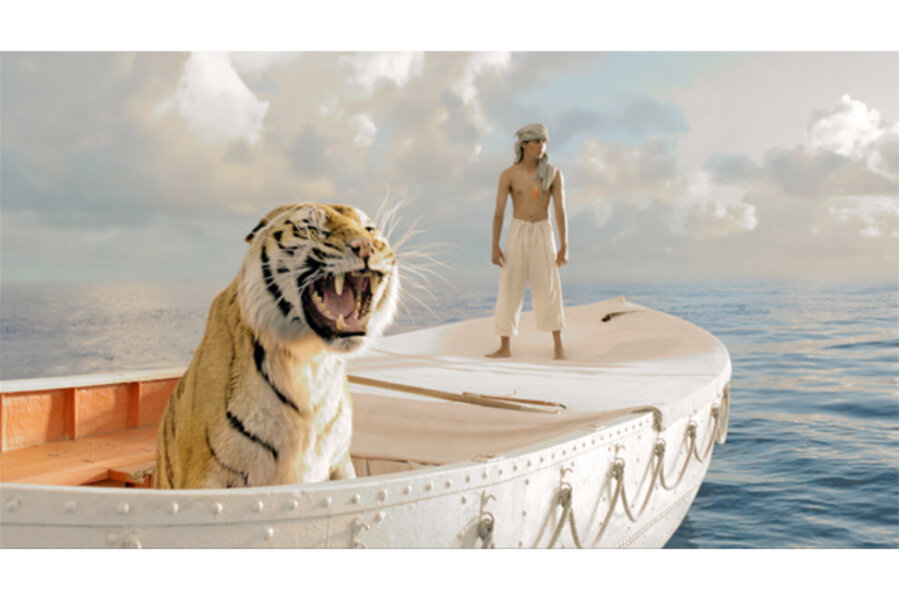Director Ang Lee takes on the 'unfilmable' 'Life of Pi': movie review
Published in 2001, Yann Martel’s Booker Prize-winning novel “Life of Pi” was instantly deemed unfilmable. And so, like that other “unfilmable” novel, “Cloud Atlas,” it has, of course, been turned into a movie – with rather happier results.
The reason for the trepidation is obvious: Much of the action takes place on a 27-foot lifeboat inhabited by a teenage Indian boy and a 450-pound Bengal tiger. Since, as one of the film’s producers has put it, they didn’t want their leading man eaten during production, a team of CGI wizards have fashioned what must be the most realistic computer-generated animal ever seen.
Ang Lee, directing from a script by David Magee, is extraordinarily versatile. “The Ice Storm,” “Sense and Sensibility,” “Crouching Tiger, Hidden Dragon,” “The Hulk,” “Brokeback Mountain” – the only common linkages here are Lee’s contemplative sensibility. In that sense, the 3-D “Life of Pi” isn’t all that much of a leap for Lee, except technologically.
There’s plenty of downtime aboard that raft in which to dramatize the meaning of life, not to mention how to avoid becoming tiger bait.
Piscine, or Pi, as he dubs himself, grows up in India in the paradisiacal former French colony of Pondicherry, where his father operates a zoo. When hard times hit, the decision is made to decamp to Canada and sell the animals, but a violent storm upturns the cargo ship en route and all are lost – animals, family – save Pi (played as a teenager by newcomer Suraj Sharma) and an orangutan, a zebra, a hyena, and that tiger, to whom Pi gives the name Richard Parker.
The events leading up to the shipwreck have a light and cockeyed comic tone. Young Pi, raised in a not-very-strict Hindu household, tries his hand at Christianity and Islam as well. He’s an ecumenical free spirit who sees all religions as equally affirming. His survival skills owe something to his cloud-borne spiritedness. Without it, he probably would not have lasted a day at sea.
Lee uses the 3-D effects with gentle sophistication: flying fish, glowing jellyfish, an island of meerkats, a humpback whale swathed in plankton – all are luminously rendered. And yet, after a while, the sameness of Pi’s survivalist escapades, and a certain touchy-feeliness in the voice-over narration (supplied by the adult Pi and played by the marvelous Irrfan Khan in a framing device), began to weigh on me. The huge success of the novel may have something to do with its extra-literary reputation as a book of wisdom, a quasi-religious tome. (Sort of like “The Little Prince.”)
Lee may, in the end, be too balanced a filmmaker to give “Life of Pi” the extra spin of lyric delirium it sorely needs. It’s a sane movie about an essentially deranged situation. Grade: B (Rated PG for emotional thematic content throughout, and some scary action sequences and peril.)







